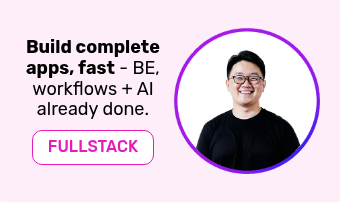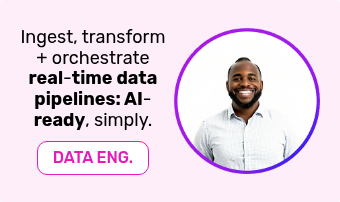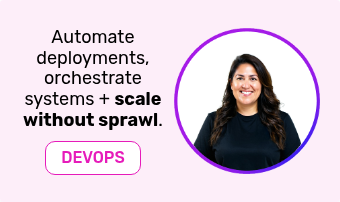We’ve worked with 100s of organisations across the world to help them integrate, ETL and analyse real-time data and build IoT solutions (using our world-leading IoT Platform) in numerous sectors. Whilst doing this, we’ve learned what does and doesn’t work.
It might sound obvious but the key thing in all successful projects is data. However it’s not about MORE data, it’s about the RIGHT data.
Data is needed to not just analyse and build a business case, but to continually feed into any solution built to allow it to operate - without it, everything else fails. In the world of ‘Big Data' and 'real-time', it’s easy to capture everything and get lost in the mess – the true skill is knowing what’s relevant and honing in on that.
As you consider the different steps outlined below and apply it to your organisation, have half a mind as to the RIGHT data that you need to collect, how and where it can be stored and analysed, as well as what’s needed to enable you to take action on it.
10 steps to getting started with integrated data, AI + IoT platform:
- Identify a problem or something that you want to improve in your organisation. You may have goals that you’re working towards, be wasting far too many resources, or needing to up production rates - often this decision has already been made for you because the problems are strategic, obvious, or you've got instruction coming from 'on-high'. Either way, the more you can define and narrow your initial focus, all whilst tying it to an overarching business goal (e.g. ESG, efficiency, productivity etc.), the easier and faster it is to get started. This article might help: AI + IoT will change the world, but not everything is an AI + IoT problem.
- Pick a champion. To drive change within any business, you need someone that is willing to educate key stakeholders and champion the project widely. Ideally, they need to have a P&L element to their role and have both a strategic understanding of what can be achieved, as well as be interested in innovation within your sector. It may well be you reading this, so it'll become your responsibility to not only make the business case, but then also bring the wider team along on the journey so that the project doesn’t stumble post-deployment - change management can be the hardest piece.
- Explore the use case. Consider how integrated data, AI + IoT technology might be used in your own environments in different scenarios to achieve your overarching goal. For example, if it was to improve efficiency, there’s lots of inputs that go into that, e.g. what’s going on on the factory floor, with your HVAC system, transport, etc. By choosing the right use case, rather than a technology and its supposed benefits, you’ll be able to plan an effective, successful project. You can read more in this article: How to identify the best use cases for real-time Industrial IoT solutions.
- Analyse what resources are available. It’s possible that there will be internal skill sets or existing technology roadmaps that might be of use, so this is the time to analyse how far they can get you and where you’re going to need to seek further support. A basic understanding of the technologies that will address your use case, your broader OT/IT architecture, as well as what a full integrated data, AI + IoT platform stack looks like, is essential, plus an idea of what the partner ecosystem looks like would definitely help.
- Find the right suppliers(s). Work with organisations that know you, your sector and that have a trusted network of partners who they can call in to craft a complete solution. Anyone that’s ramming shiny technologies down your throats at the beginning, or who is promising a silver bullet, is advisable to be given a wider berth. Instead look for people that solves business problems and will work with you to help apply the technology to it to meet your goals. Whoever you choose to work with, it’s critical that they have an understanding of your industry and that they can translate what you’re trying to achieve into something manageable – also ensure that they also have an eye for the long-term and aren’t offering siloed non-expandable technologies. This article might help: Which are the best IoT platforms and how do they differ?
- Pick a key metric + look to fill data gaps. Pick what the key metric of success will be and then establish where you have data gaps or the inability to measure. What would an ideal data set look like? What’s currently missing? Do you have historical data that would be of use? From here you can establish what hardware and software will be needed, as well as how automation and business logic models would work in your particular business.
- Identify your technology stack. You should now know not just what you’re looking to achieve, but the data needed to make it run and pieces of hardware that can actually do it. Much like bricks of Lego, an integrated data, AI + IoT platform and your wider technology stack could be made of any number of things and one-size doesn’t always fit all. Find out more by downloading our eBook: Harnessing IoT, AI, and Real-Time Data in Businesses: A Comprehensive Guide.
- Start small. Run a small pilot program to establish what the business case is. This approach reduces risk and necessary upfront investment, making it far more likely that you’ll be able to begin. Take one production line, store, or handful of assets and work with it; monitoring over time to see (and measure) the impact that it’s having - all with an eye on how this can scale. If you’re working with a good provider, as well as using data science to combine data sets and explore the impact that changes will make, they’ll also be looking to add a layer of machine learning so that, as the model runs in real-life, it’s able to identify further changes that will enhance performance.
- Make the business case. From here you can craft the business case with proven data points for expanding and scaling the solution to different sites, lines or products. With clearly identified metrics and establish-able benefits, you’ll find making the business case simple.
- Scale. Once you’ve proven your solution’s worth, it’s now time to capitalise on its benefits. Roll it out to all production lines, factories, and divisions. The more relevant data that you can capture across your business will help you (or your machine learning tool) to improve further – you could even think about adding further inputs and devices. Working with a partner that can work with you over the longer-term and, critically, knows how to scale will shorten future reduce costs, speed-up the deployment process, and reduce further development cycles.
Start small, build business cases, and utilise organisations and partners that not only work together and are experts in their field, but who are asking the right questions.
Speak to us today to find out more and to get some free advice.




















































